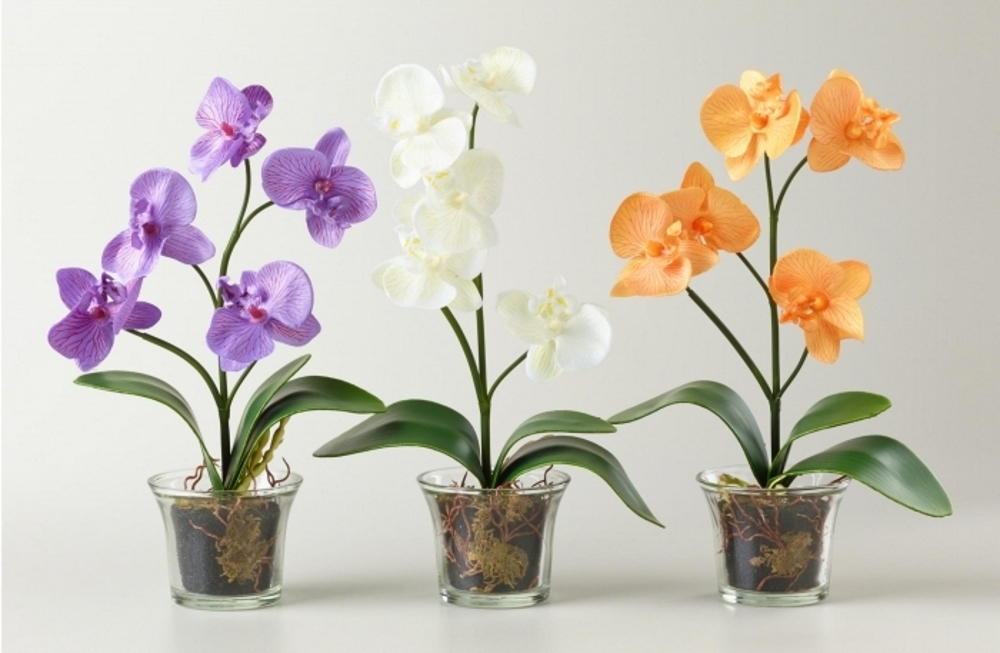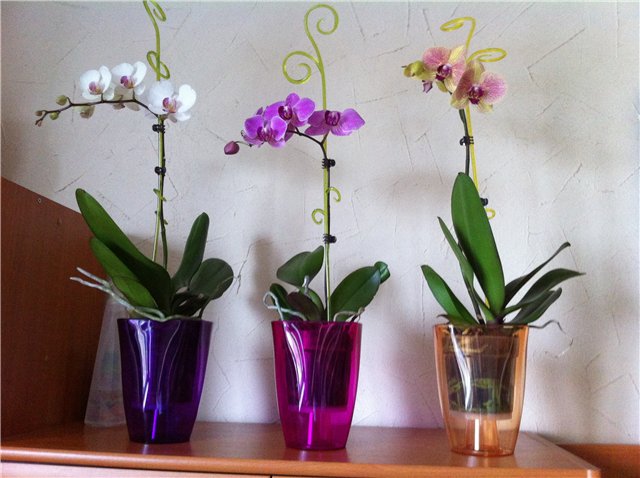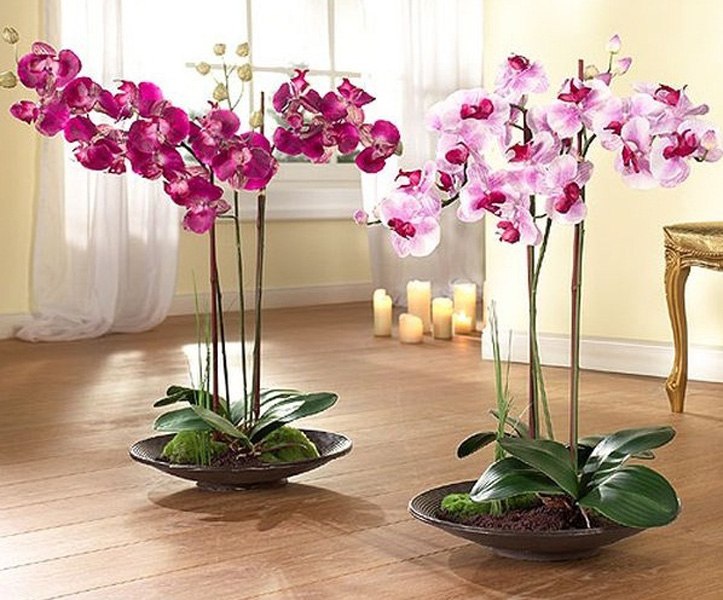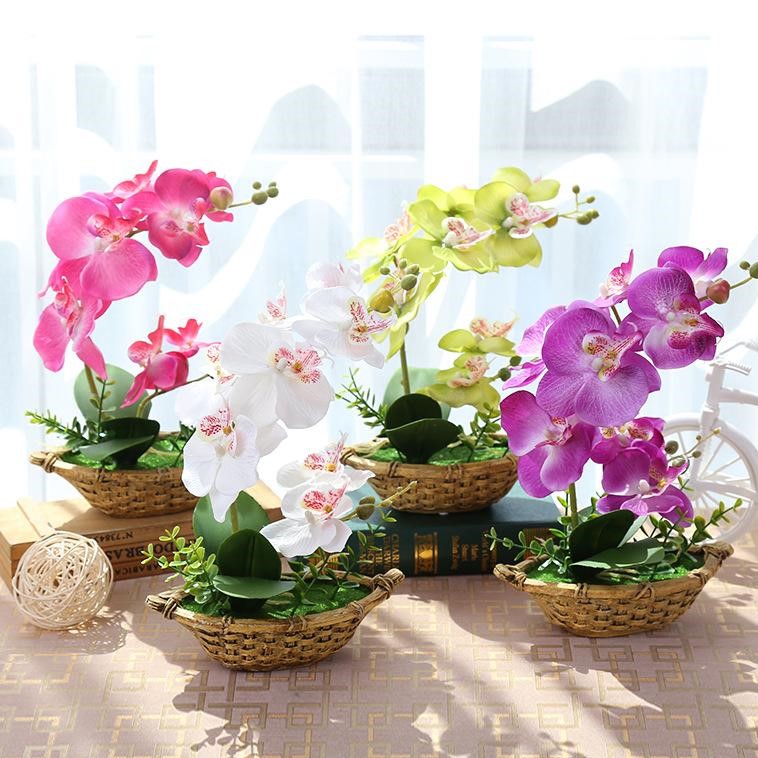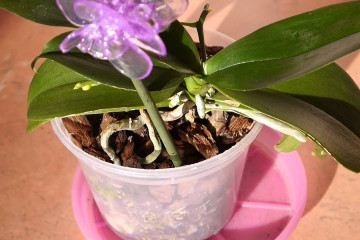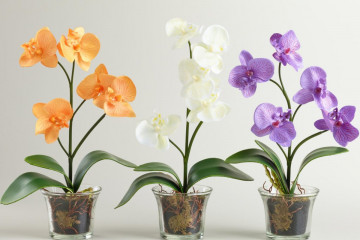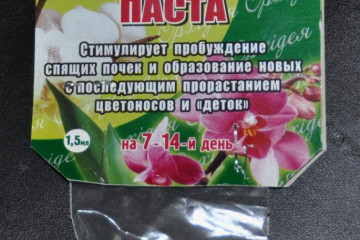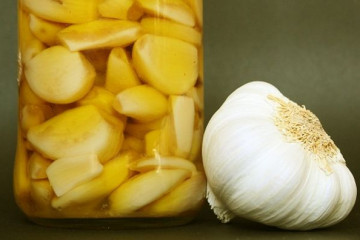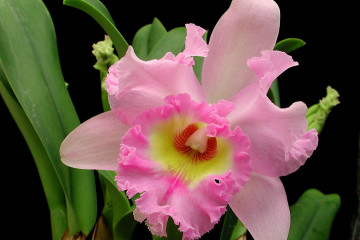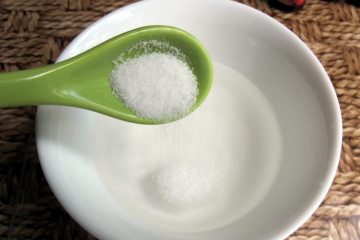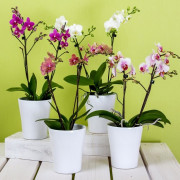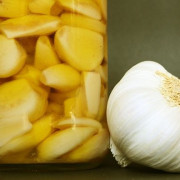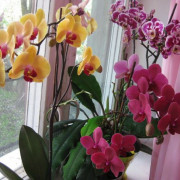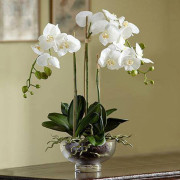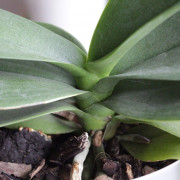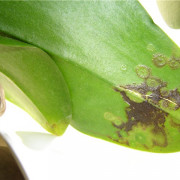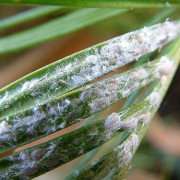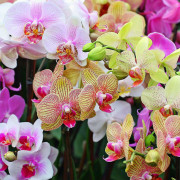Orchid pots: criteria and options for selection
Content:
The real queen of indoor flowers is the orchid. Today it is at the peak of its popularity. Pots of these varied and exotic flowers can be found in every third house. They are loved for their long flowering, delicate scent and luxurious clusters of buds. But in content they are whimsical.
Description of the flower
The most common type of home orchid is phalaenopsis. There are also more rare ones on sale, for example, dendrobium. It is almost impossible to grow an orchid from seeds at home without special equipment. You can purchase a young plant on your own, and with proper care, it will delight the owners for many years.
Home orchids need close attention. They require special conditions, proper watering and timely pruning. The plant is quite whimsical and susceptible to stress. Orchids need diffused sunlight and approximately the same temperature all the time. For the proper development of the root system, air is needed. Before choosing a pot for an orchid, you need to remember all the features of growing a flower.
Pot selection criteria
Orchids are usually sold in thin plastic containers. They may not last long. After the first flowering, the plant is recommended to be transplanted. The root system of orchids is well developed, so transplanting does not cause any particular problems. The pot is of great importance for the further development of the flower.
Conditions to be maintained:
- temperature regime;
- aeration of the roots;
- outflow of moisture.
They are vital for such a capricious flower as an orchid.
Temperature
The pot must maintain the optimum temperature for the root system, without overheating or excessive cooling. This means that in critical situations, the walls of the pot must retain the necessary heat for some time. The comfortable temperature for an orchid is 23 ° C during the day and 15 ° C at night.
Root aeration
When wondering what kind of pot is needed for an orchid, it should be remembered that the roots of the flower need air access. Do not be alarmed if the roots grow upward, crawling out of the pot. And even more so, do not push them in or cut them off. This is the natural state of the plant, since the orchid is native to the tropics, its aerial roots are intended for additional support and nutrition. The flowers receive moisture and nutrition through the roots.
Moisture
Proper watering and optimal air humidity are a guarantee of the correct development of the orchid. If one of the conditions is violated, various diseases can develop on the plant and pests can start, because of which it will wither. The pot should be able to drain excess liquid while still allowing the roots to absorb the required amount of water.
Types of pots
Orchid pots come in a variety of styles. They differ in the material of manufacture. The most common:
- glass;
- transparent;
- double.
In fact, there are much more types and materials from which the flowerpots are made, but they are less common than the main ones.
Glass
Orchid pots made of glass look stylish and fit seamlessly into any decor. But, unfortunately, they are only suitable for professional florists. In a glass container, it will not be possible to provide a normal outflow of moisture and aeration for the roots. Experts will be able to monitor optimal watering, but for amateurs it will be quite difficult.
The advantages of this type of pots also include resistance. A tall orchid (a flower in a pot) needs to fix the roots and trunk, otherwise it can easily roll over and be injured. Glass containers are heavy, so they provide reliable support for even the most spreading specimen. In addition, glass perfectly saturates the root system with sunlight.
Transparent
Orchid planters made of transparent plastic will be a real salvation for novice breeders. Tropical flowers need constant sunlight as the plant's roots are involved in photosynthesis. Through transparent plastic, it is easy to see problems in the root system. Also, by the color of the roots, you can determine when the plant needs watering.
The disadvantages of transparent plastic pots include their lightness, as a result of which the orchid is unstable. To prevent overturning, you can place this pot in an orchid planter. This will also help protect the flower from overflow.
Double
This type is also made of transparent plastic and combines a pot and a planter. It is more stable than the previous version. Also, a double pot helps to further scatter sunlight, provide water flow and monitor the root system.
Double pots can accommodate several types of material. For example, the inside can be made of plastic, while the outside can be made of metal or wood. Such flowerpots are unusual in appearance, as well as reliable and practical.
Other types
Is it possible to plant an orchid in an opaque pot is a question that is often asked by beginners who have no experience in growing these tropical beauties. Yes, you can. Any container, even the most seemingly unsuitable container for these purposes, is suitable for growing orchids. Professional florists grow the plant in ceramic, wood, metal, rubber, cement pots. A garden pot also applies to these flowers. There are wicker pots and even knitted ones. Transparent orchid planters are also popular. The main condition for growing in unusual containers is compliance with the necessary criteria: moisture, air, sun. So to the question of whether it is possible to plant an orchid in an opaque pot, there is an answer: if there is no experience in growing, then it is not worth it.
Size options
The size of an orchid pot is of great importance for proper flower care. A large container for the plant is not needed. Often, inexperienced growers, having seen a large number of aerial roots, tend to transplant the orchid into a larger pot. There is no need to rush with this, as the root system feels great in cramped conditions.
Also, when transplanting, you do not need to choose a large flowerpot. There is an unequivocal answer to the question of which pot to transplant the orchid into. You need to pick up a pot with a diameter larger than the previous one by only 1 cm.
Making a pot with your own hands
Orchids in handmade flowerpots will look great.They can be made from an empty plastic container. If you approach this issue with intelligence and imagination, you can get a real work of art.
Pot size
When starting to create an exclusive flowerpot, you must first decide on its size. It must be remembered that too large can lead to overdrying of the root system, it can be crowded in a small flower, which will also affect the proper development of the plant.
It is best to focus on the size of the pot in which the flower was located before transplanting, and make it 1-2 cm larger.
Manufacturing materials
Orchid pots can be made from different materials. The easiest and fastest way is to make holes in the plastic food container. To avoid organic decomposition, the future pot must be scalded several times with boiling water.
Adherents of eco-style can make pots from natural materials: wood, coconut shell, stone. When transplanting an orchid, a good drainage layer should be provided. This will prevent the roots from growing to capacity.
To create a pot, you can use various construction waste: scraps of plastic or metal pipes, picket fence, nails. An important point in the manufacture of an orchid container is the ecological connection of parts.
If a decision is made to cast a pot of cement or gypsum, then at the time of manufacture it is worth making holes for aeration and moisture outflow. Once completely dry in this material, it will be almost impossible to drill them out.
Things to Consider
When a container for orchids is made by hand, it is necessary to ensure that the conditions for flower growth are met. Holes for moisture, air and sunlight must be present in sufficient quantity. The presence of sharp edges and piercing protrusions is not allowed. This will ensure the safety not only of the plant, but also of the owner. And most importantly, you should not make the pot too bright and catchy, otherwise the attention will shift from floral beauty to hand-made beauty.
Due to the wide range of possibilities, orchid flowerpots can be not only an addition to an exotic flower, but also a separate decorative element. It all depends on the taste preferences and capabilities of the grower.

